- What is cryopreservation?
- How cryopreservation works
- History of cryopreservation
- Uses of cryopreservation in assisted reproduction
- Effectiveness of cryopreservation
- Cryopreservation procedure
- Benefits associated with cryopreservation
- Limitations and risks associated with cryopreservation
- Ethical issues and legislation associated with cryopreservation in Australia
What is cryopreservation?
|
Click here to watch a video on Fertility and Eggs. |
With relation to assisted human reproduction, cryopreservation refers to the process of freezing human gametes, embryos and/or ovarian or testicular tissues, with a view to thawing the cells for use in assisted reproduction treatments. Cryopreservation plays an important role in assisted reproduction, as it enables the reproductive cells collected and/or fertilised in one treatment cycle, to be used for fertilisation and/or implanted into the female patient’s uterus, in a future treatment cycle. This increases the efficiency of infertility treatment and reduces the cost and discomfort to the patients involved.
Following gamete or reproductive tissue retrieval (and possibly in vitro fertilisation of gametes to produce embryos), the products are placed in straw like tubes, which are then placed in a cryopreservant (an antifreeze solution) and stored at subzero temperatures, until they are required for use. Tissues can then be removed from storage, thawed, and used in assisted reproduction.
There are numerous cryopreservation protocols, which involve a range of cryopreservants and vary in terms of the storage temperature, freezing and thawing times, and the particular cells which they are suitable for preserving (e.g. sperm vs. oocytes).
How cryopreservation works
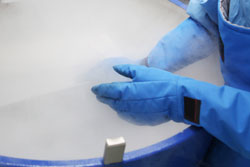
In order for cells to survive the cryopreservation process (known as cryosurvival), they must maintain movement of water inside the cell, across the cell membrane, throughout freezing. This movement enables cells to balance the external pressure created by the formation of ice in the cryopreservant. Cryopreservants therefore act not only as an osmotic gradient to aid water’s movement across the membrane, but also as an antifreeze, to reduce the temperature at which icicles form and thus the pressure on the cells associated with icicle formation.
The movement of water across the cell membrane is highly dependent on the volume of free water in the cell (which varies depending on cell type), as well as other cell characteristics. This means that the relative effectiveness, as well as the most appropriate protocols (i.e. cryopreservants, thawing and freezing times) for cryopreservation, are highly dependent on the cell type (e.g. sperm vs oocyte). Rates of success in cryopreserving a range of human tissues, therefore vary considerably between cell types, as do methods of cryopreservation.
History of cryopreservation
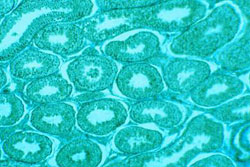
As associated reproductive techniques (e.g. ovarian stimulation) have developed, so have the protocols for freezing human embryos and oocytes. This has enabled the collection of more oocytes each ovulatory cycle, than could safely be used in the same treatment cycle. The ability to freeze these embryos has enabled their use in future treatment cycles.
The development of cryopreservation protocols was a key focus of research conducted by infertility centres in the 1970s and 1980s. Successful protocols for freezing embryos and semen were quickly established and live births from assisted reproductive cycles using frozen semen or embryos were recorded in the 1980s. While research has also focused on the cryopreservation of human oocytes and ovarian tissues, freezing of female reproductive tissues has proven more difficult, and scientists continue to experiment with various protocols for freezing oocytes.
Today the majority of assisted reproductive techniques rely to some extent on cryopreservation. It is rare for a woman to undergo ovarian stimulation without storing, or at least intending to store, some of her retrieved oocytes, either fresh or following fertilisation (as embryos). Some of the key events in the development of cryopreservation are listed below.
- 1949: Mammalian sperm was first cryopreserved, using glycerol.
- 1950s: The first live births from cryopreserved, human spermatozoa were reported.
- 1982: The successful cryopreservation of mammalian embryos was first achieved.
- 1983: The first live birth from a cryopreserved human embryo was reported.
- 1985: The use of propanediol and sucrose was established as a protocol for freezing human embryos. The protocol remains the most widely used today.
- 1986: The first live birth from a cryopreserved human oocyte was recorded.
- 1987: Evidence emerged that morphologically normal embryos could be frozen more successfully than morphologically abnormal embryos.
- 1987: Records revealed that at least 63 babies had been born from cryopreserved human embryos to date.
- 1988: The first attempts to freeze immature oocytes were made.
- 2004: The first live birth following the cryopreservation of ovarian tissue was reported. The tissue was regrafted to the patient’s uterus, following cancer treatment in which her fertility was lost. Following grafting of the ovarian tissue, the patient’s menstrual cycle resumed and natural fertilisation occurred.
Uses of cryopreservation in assisted reproduction
Cryopreservation has a number of clinical and research applications related to assisted reproductive techniques.
Future assisted reproduction treatment cycles

Frozen gametes, embryos and tissues can be donated for research purposes, if a couple has successfully conceived and consents to this use of their embryos.
Individuals whose fertility is threatened, for example because they will undergo chemotherapy or radiotherapy, may preserve their gametes or gonadal tissues through cryopreservation. Successful protocols for sperm cryopreservation exist, although protocols for the preservation of gonadal tissues and oocytes remain experimental and much less efficient.
Effectiveness of cryopreservation
The effectiveness of cryopreservation varies, depending on the type of tissues being preserved and the cryopreservation regimen.
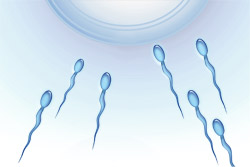
There are however a number of factors which influence the effectiveness of sperm cryopreservation including:
- Quality of the semen sample – The proportion of live sperm which survive the freezing and thawing process is higher in a normozoospermic sample (24.9% survival) than in a oligoozoospermic sample (11.9% survival).
- Semen preparation – The method by which semen is washed prior to freezing also influences post-thaw vitality. In normozoospermic semen samples, the proportion of sperm which survive cryopreservation increases from 24.9% with no preparation, to 35.6% if sperm are washed using a ‘swim up’ technique prior to cryopreservation. Both the swim up and density gradient centrifugation techniques also significantly improve the survival rate of spermatozoa in oligozoospermic samples (from 11.9% when not washed to 27.7% using swim up and 22.4% using centrifugation).
The cryopreservation of oocytes has proven more challenging than the cryopresevation of sperm, in particular because many regimens cause damage to an egg’s zona pellucida (i.e. shell). However there are now a range of cryopreservation protocols which can be used to preserve mature or immature oocytes. While survival rates for immature oocytes have reached 60%, the freezing process often alters the oocyte development process and fertilisation and live birth rates for surviving oocytes, are consistently lower than those achieved using fresh oocytes.
A recent study which compiled the outcomes from all oocytes cryopreserved using a slow freezing protocol between 1997-2005 revealed an overall post-thaw live birth rate of 1.9%, a significantly lower rate than that achieved through the use of fresh oocytes. Recent developments in the use of vitrification techniques (i.e. rapid freezing techniques), have however improved post-thaw survival rates and a number of recent studies have reported >90% oocyte survival following vitrification, with implantation occurring in up to 11% thawed oocytes.
Cryopreservation of embryos
Overall cryopreservation of embryos results in about 5% chance of live birth, while for blastocysts the rate is around 10%. It is considerably more efficient than the cryopreservation of oocytes and it is therefore most common for oocytes to be fertilised in vitro prior to cryopreservation.
Reproductive outcomes following embryo cryopreservation depend on the stage of embryo development, both at the time of freezing and at the time of implantation (i.e. post thaw). Rates of implantation are significantly greater in embryos frozen after growing to a size of 6 or more cells. Embryos which have recommenced mitosis (division and replication which leads to the growth of the embryo) post-thaw but pre-implantation have a higher chance of implantation.
Cryopreservation of ovarian and testicular tissues
The cryopreservation of gonadal tissues is most commonly performed when a patient must immediately undergo toxic treatment which threatens their fertility. As the urgency of such treatment may not allow time for the collection of mature gametes (e.g. because there is no time to perform ovarian stimulation or because they have not yet gone through puberty), removal and storage of gonadal tissues which contain immature gametes is sometimes the only option for fertility preservation.
While live births have been recorded following the cryopreservation of ovarian tissue, and prepubescent testicular tissue, successes have been rare and this remains an experimental science.
Cryopreservation procedure
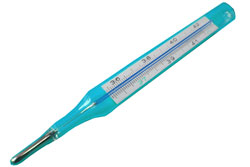
A slow freeze protocol involves gradually reducing the temperature of the reproductive tissues and their cryoprotectants. For example tissues may be added to cryoprotectants at room temperature, and then cooled at a rate of -2oC/min until they reach -7oC. The rate of temperature reduction is then reduced to -0.3oC/min until -30oC is achieved, before being increased to -35oC/min to arrive at -135oC. Finally, tissues are plunged into liquid nitrogen for storage at -196oC.17
On the other hand, rapid freeze protocols, also known as vitrification protocols, place the reproductive tissues and cryopreservants directly into liquid nitrogen, at a temperature of -196oC. In order to prevent the formation of ice crystals in the cells, the concentration of cryopreservant is increased.
Once frozen, human tissues are stored in liquid nitrogen at or below -196oC.
A typical thaw protocol involves placing the straws containing cryopreserved tissues in water baths and gradually increasing the temperature until they reach room temperature. The concentration of the cryopreservation media in which they are stored is simultaneously gradually reduced, in order to reduce its toxic effect on the reproductive tissues.

Glycerol was the first cryopreservant used to freeze human gametes and resulted in the cryosurvival of human spermatozoa in the 1940s. Glycerol remains a commonly used cryopreservant for human semen, and a number of pregnancies have resulted from thawed spermatozoa cryopreserved in glycerol for extended periods of time (e.g. >20 years).
The DMSO protocol was developed in the early 1980s. It was successfully used as a cryopreservant for a number of years. The first live births from cryopreserved embryos used this protocol, as did the first live birth from a cryopreserved oocyte.
DMSO is no longer in use due to concerns that it may increase the risk of genetic abnormalities, and because survival and implantation rates were low using this protocol.
Propenediol (PROH) with or without sucrose at various concentrations
Propenediol was first used as a cryoprotectant in the 1980s. It essentially superceded DMSO and remains the most popular medium used today. Research has demonstrated that preparations with sucrose are more efficient than those without although success rates vary depending on the sucrose concentration. For example oocyte survival was higher when 0.2M or 0.3M sucrose concentrations were used, compared to with 0.1M sucrose (71% vs 25-50%). However, there are concerns that higher concentrations of sucrose (i.e. 0.3M) may retard embryo development.
Sodium depleted media – Choline
Recently, scientists attempting to increase success rates in oocyte cryopreservation have adopted propenediol/sucrose protocols in which sodium is replaced by choline. This is due to emerging evidence that sodium negatively impacts on the cryopreservation process. To date, live births have not been recorded following the use of such cryopreservants, and there is not enough information to make comparisons of the outcomes using this medium, with other cryopreservation regimes.
Benefits associated with cryopreservation
The development of cryopreservation techniques revolutionised the practice of IVF, by enabling gametes retrieved, or embryos created, but not used in one IVF treatment cycle, to be stored and used in future cycles. There are numerous associated benefits.
Efficiency of assisted reproduction

Reduced risk of ovarian hyperstimulation syndrome
Ovarian hyperstimulation syndrome (OHSS) is a serious condition which can result in death if untreated. It is the most common complication of assisted reproduction. OHSS occurs in response to pharmaceutical stimulation of the ovaries, and its incidence can theoretically be reduced by reducing the frequency of ovarian stimulation, or by allowing women a period of rest between ovarian stimulation and embryo implantation.
Cryopreserving embryos from one cycle to the next means that ovarian stimulation is not necessary each time a treatment cycle is commenced, and that if the woman’s ovaries are hyperstimulated, embryo implantation can be delayed without wasting retrieved oocytes. However, a recent review reported insufficient evidence was yet available to support the routine use of cryopreservation as a strategy for preventing ovarian hyperstimulation syndrome.
Cryopreservation enables embryos to be stored for research purposes, or for couples who conceive in their first treatment cycle and have unused, frozen embryos, to donate their embryos to research.
Reduces the implantation of multiple embryos
Implanting multiple embryos per cycle carries health risks to both the pregnant woman and her foetus/es, including the risk of multiple pregnancy and associated risks such as miscarriage and low birth weight.
Prior to the development of techniques to cryopreserve embryos, there was an impetus to implant all available embryos, as any unused embryos could not be stored. However, it is now typical to implant only one or two embryos, and cryopreserve any remaining embryos for use in future treatment cycles.
Cryopreservation enables individuals whose fertility is threatened to preserve their reproductive cells so that they have the option of conceiving using assisted techniques in the future. Fertility preservation is now commonly offered to prepubescent and postpubescent individuals undergoing radiotherapy and/or chemotherapy. It may also be used by women who wish to delay childbearing and/or have a family history of early menopause.
Limitations and risks associated with cryopreservation
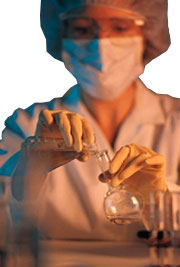
Storing human tissues can also be costly and is not covered by Medicare.
Ethical issues and legislation associated with cryopreservation in Australia
There are numerous ethical issues surrounding cryopreservation. For this reason, the freezing and storage of human tissues is highly regulated in Australia, and around the world. Practitioners must provide patients with reliable information regarding the outcomes of assisted reproductive treatments following cryopreservation (e.g. live birth rates, outcomes for offspring conceived using the techniques) so that they can make informed decisions about the storage of their tissues.
Ownership of frozen embryos/gametes
The storage of human tissues raises concerns about their ownership, particularly with regard to embryos. In Australia the ownership of embryos remains with the couple who stored them, and embryos can only be used or disposed of with the consent of both partners, unless the time limit for storage has been reached, in which case they must be disposed.
It is extremely important that all stored reproductive tissues are extensively labelled, in particular to ensure that the owners of stored tissues can be identified. Clinics must also ensure that there labels cannot be easily altered.
Storage of tissues of a deceased person
The ownership of stored gonadal tissues remains with the provider, and clinics are required to dispose of cryopreserved tissues, once a provider is deceased. Only if the tissue provider has clearly expressed a wish that the tissues be used in the event of death (e.g. for research purposes), may tissues remain in storage, or be removed for use.
Human tissues can be stored for a maximum period of five years in Australia.
A separate consent form must be obtained for each person storing gonadal tissues.
More information
 |
For more information on infertility, including investigations and treatments, as well as some useful animations, see Infertility. |
 |
For more information on alternative treatments, see Infertility Treatments / Assisted Reproductive Technologies (ARTs). |
References
- Cohen, J. Troussen, A. Dawson, K. et al, The Early Days of IVF outside the UK. Hum Reprod. Update, 2005;11(5):439-60.
- Mandelbaum, J. Junca, A.M. Plachot, M. et al, Human embryo cryopreservation, extrinsic and intrinsic parameters of success. Human Reprod, 1987;2(8):709-15.
- Gook, D.A. Edgar, D.H. Human Oocyte Cryopreservation. Human Reprod Update, 2007;13(6):591-605.
- Polge, C. Smith, A.U. Parkes, A.S. Revival of Spermatozoa after Vitrification and Dehydration at Low Temperatures. Nature. 1949;164:666.
- Bunge, R.G. Keettel, W.C. Sherman, J.K. Clinical use of frozen semen: report of four cases. Fertil Steril. 1954;5(6):520-9.
- Trounson A, Mohr L. Human pregnancy following cryopreservation, thawing and transfer of an eight-cell embryo. Nature. 1983;305: 707-709.
- Testart, J. Lassalle, B. Belaisch-Allart, J. et al High pregnancy rate after early human embryo freezing. Fertil Steril. 1986;46, 268-272.
- Chen, C. Pregnancy after human oocyte cryopreservation. Lancet, 1986;1(8486):884-6.
- Mandelbaum, J. Junca, J. Plachot, M. et al, Cryopreservation of human embryos and oocytes. Hum Reprod. 1988;3:117-9.
- Donnez, J. Dolmas, M.M. Demylle, D. et al, Live birth after orthotopic transplantation of cryopreserved ovarian tissue. Lancet. 2004;364:9443:1405-10.
- National Health and Medical Council of Australia. Ethical Guidelines on the use of assisted reproductive technology in clinical practice and research. National Health and Medical Council of Australia, 2004. [cited 2009, Jan 15] available from: http://www.nhmrc.gov.au/publications/synopses/e78syn.htm
- British Fertility Society, A strategy for fertility services for survivors of childhood cancer. 2003. [cited 2008, November 15] available from: http:// www.britishfertilitysociety.org.uk/practicepolicy/documents/fccpaper.pdf
- Pickering, S. Braude, P. Further advances and used of assisted conception technology. BMJ, 2003, 327:1156-8.
- Counsel, M. Bellinge, R. Burton, P. Vitality of Oligozoospermic Semen Samples is improved by both swim-up and density gradient centrifugation before cryopreservation J Assisted Reprod Genet, 2004;21(5):137-42.
- Oktay, K. Cil, A.P. Bang, H. Efficiency of oocyte cryopreservation: a meta analysis. Fertil Steril. 2006;86(1):70-80.
- Menezo, Y. Cryopreservation of IVF embryos: which stage? Eur J Obstet Gynecol Reprod Biol, 2004;113(Supp1):S28-32.
- Guerif, F. Bidault, R. Cadoret, V. Parameters guiding selection of best embryos for transfer after cryopreservation: a reappraisal. Human Reprod. 2002;17(5):1321-6.
- Liebermann, J. Tucker, M.J. Effect of a carrier system on the yield of human oocytes and embryos as assessed by survival and development potential after vitrification. Reproduction. 2002;124:483-9.
- Friedler, S. Giudice, L.C. Lamb, E.J. Cryopreservation of embryos and ova. Fertil Steril. 1988; 49(5):743-64.
- Horne G. Atkinson A. Pease E.H.E. et al Case report: live birth with sperm cryopreserved for 21 years prior to cancer treatment. Human Reprod. 2004;19: 1448-9.
- Marik J.J. Pregnancy after 20 years of sperm cryopreservation. J Reprod Med. 1998;43:922.
- Zeilmaker, G.H. Alberda, A.T. van Gent, I. et al, Two pregnancies following transfer of intact frozen-thawed embryos Fertil Steril. 1984;42(2):293-6.
- D’Angelo, A. Amso, N.N. Embryo freezing for preventing ovarian hyperstimulation syndrome Cochrane Database Syst Rev. 2007;Issue 3:Art. No.: CD002806
- Fitzmaurice, G.J. Boylan, C. McClure, N. Are pregnancy rates comprised following embryo freezing to prevent OHSS?. Ulster Med J. 2008;77(3):164-7.
- IVF Australia, Our Current Costs, 2009, [cited 2009 May 28], Available from: http://www.ivf.com.au/Page/SitePageSecondLevel.aspx?pageId=52
All content and media on the HealthEngine Blog is created and published online for informational purposes only. It is not intended to be a substitute for professional medical advice and should not be relied on as health or personal advice. Always seek the guidance of your doctor or other qualified health professional with any questions you may have regarding your health or a medical condition. Never disregard the advice of a medical professional, or delay in seeking it because of something you have read on this Website. If you think you may have a medical emergency, call your doctor, go to the nearest hospital emergency department, or call the emergency services immediately.








